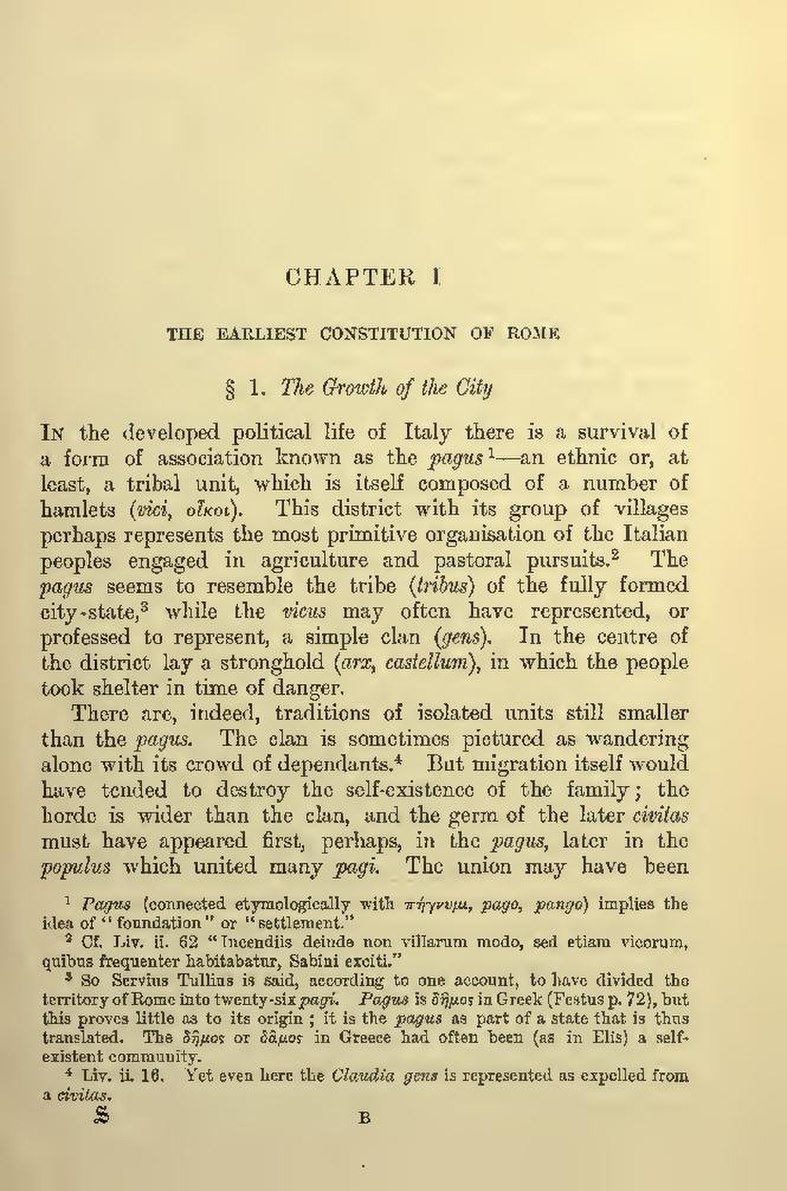CHAPTER I
THE EARLIEST CONSTITUTION OF ROME
§ 1. The Growth of the City
In the developed political life of Italy there is a survival of a form of association known as the pagus[1]—an ethnic or, at least, a tribal unit, which is itself composed of a number of hamlets (vici, [Greek: oikoi]). This district with its group of villages perhaps represents the most primitive organisation of the Italian peoples engaged in agriculture and pastoral pursuits.[2] The pagus seems to resemble the tribe (tribus) of the fully formed city-state,[3] while the vicus may often have represented, or professed to represent, a simple clan (gens). In the centre of the district lay a stronghold (arx, castellum), in which the people took shelter in time of danger.
There are, indeed, traditions of isolated units still smaller than the pagus. The clan is sometimes pictured as wandering alone with its crowd of dependants.[4] But migration itself would have tended to destroy the self-existence of the family; the horde is wider than the clan, and the germ of the later civitas must have appeared first, perhaps, in the pagus, later in the populus which united many pagi. The union may have been, pago, pango) implies the idea of "foundation" or "settlement."]in Greek (Festus p. 72), but this proves little as to its origin; it is the pagus as part of a state that is thus translated. The [Greek: dêmos] or [Greek: damos] in Greece had often been (as in Elis) a self-existent community.]
- ↑ Pagus (connected etymologically with [Greek: pêgnymi
- ↑ Cf. Liv. ii. 62 "Incendiis deinde non villarum modo, sed etiam vicorum, quibus frequenter habitabatur, Sabini exciti."
- ↑ So Servius Tullius is said, according to one account, to have divided the territory of Rome into twenty-six pagi. Pagus is [Greek: dêmos
- ↑ Liv. ii. 16. Yet even here the Claudia gens is represented as expelled from a civitas.
